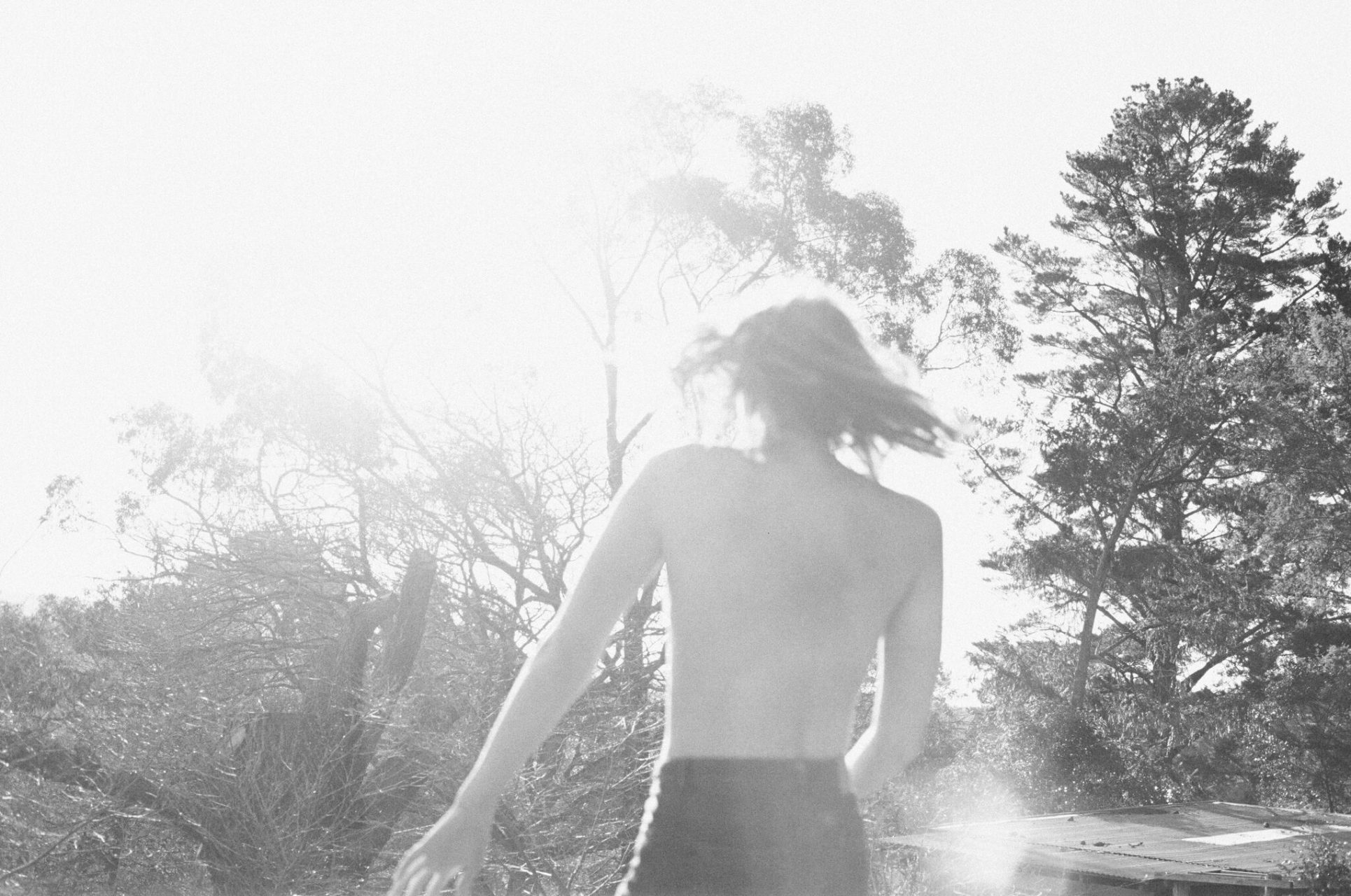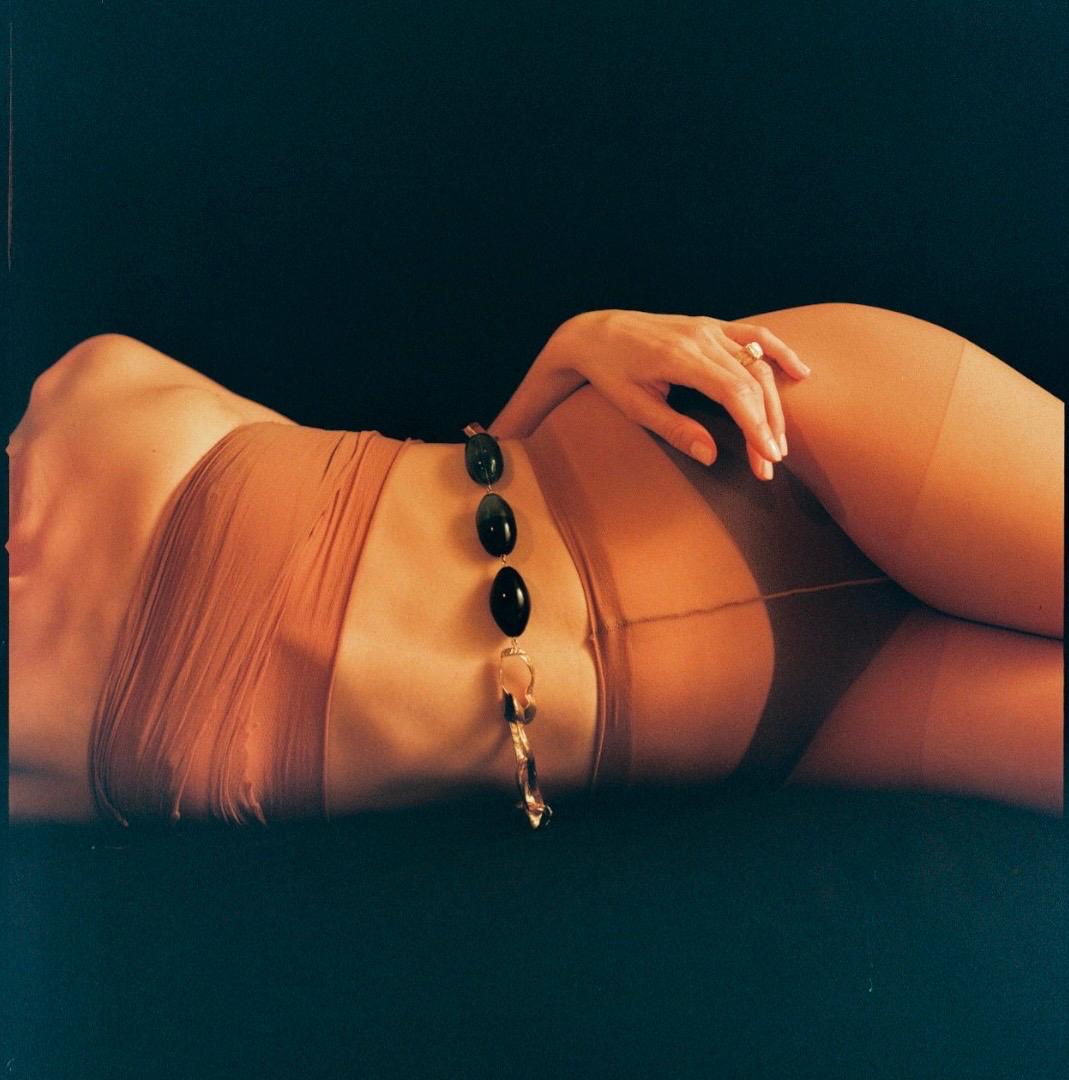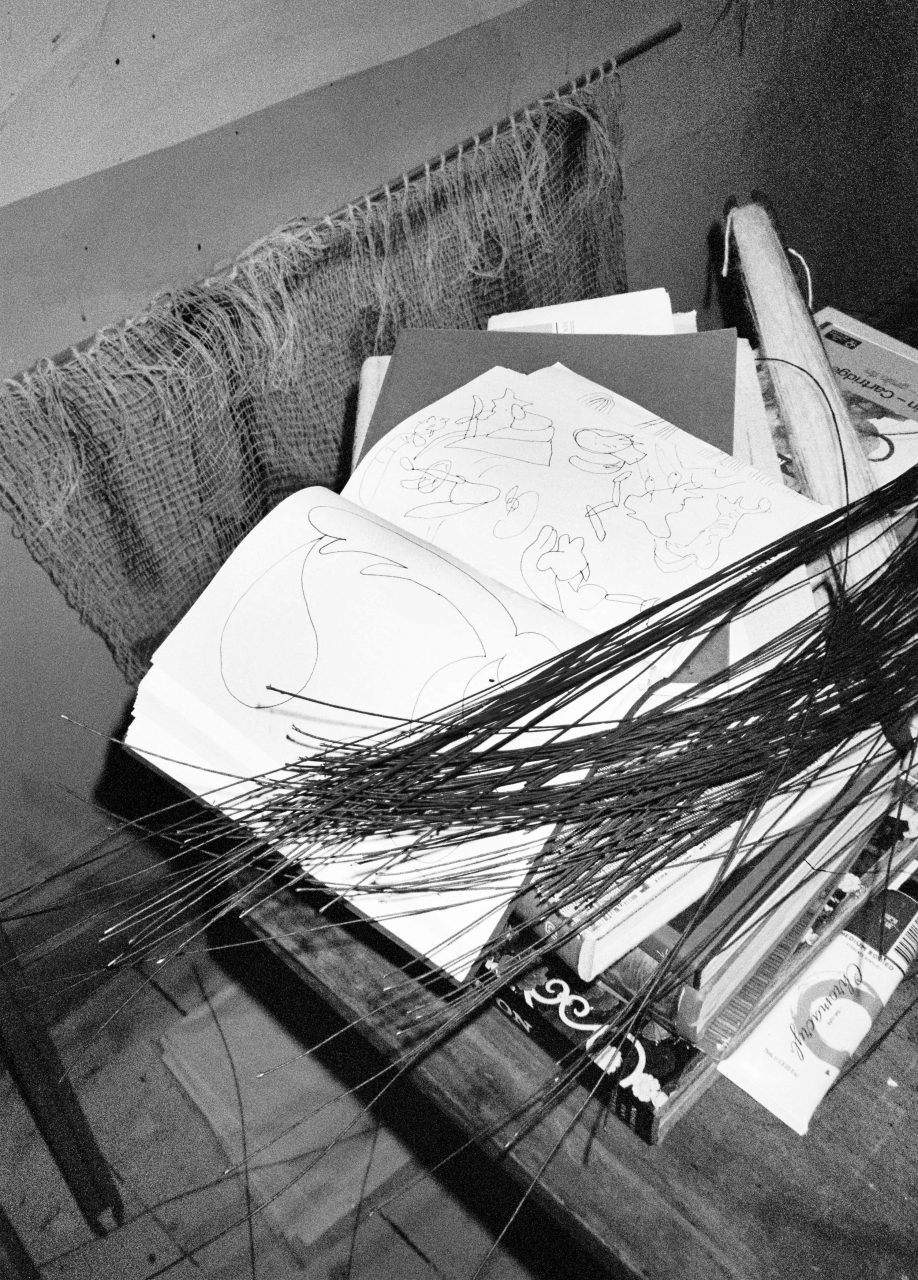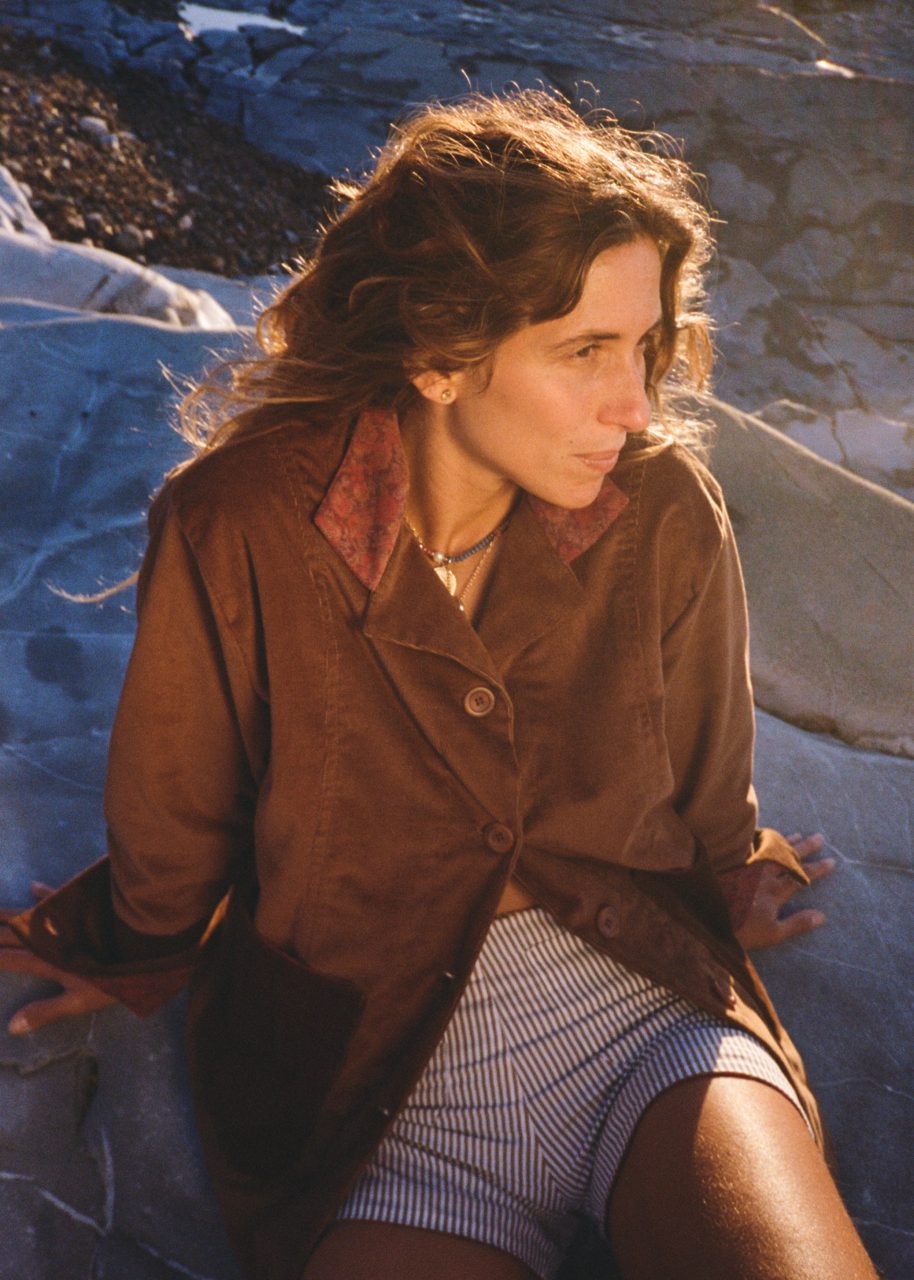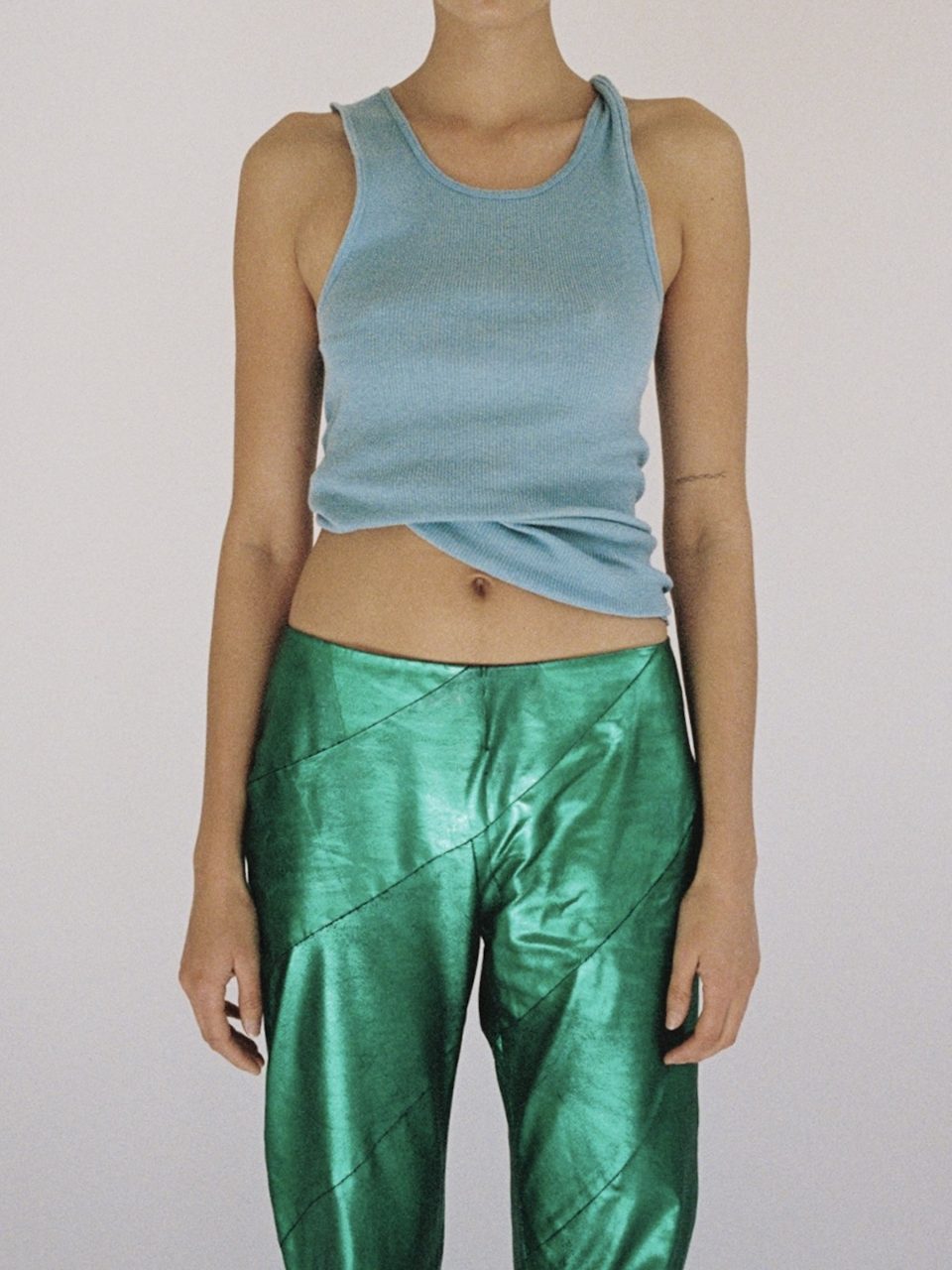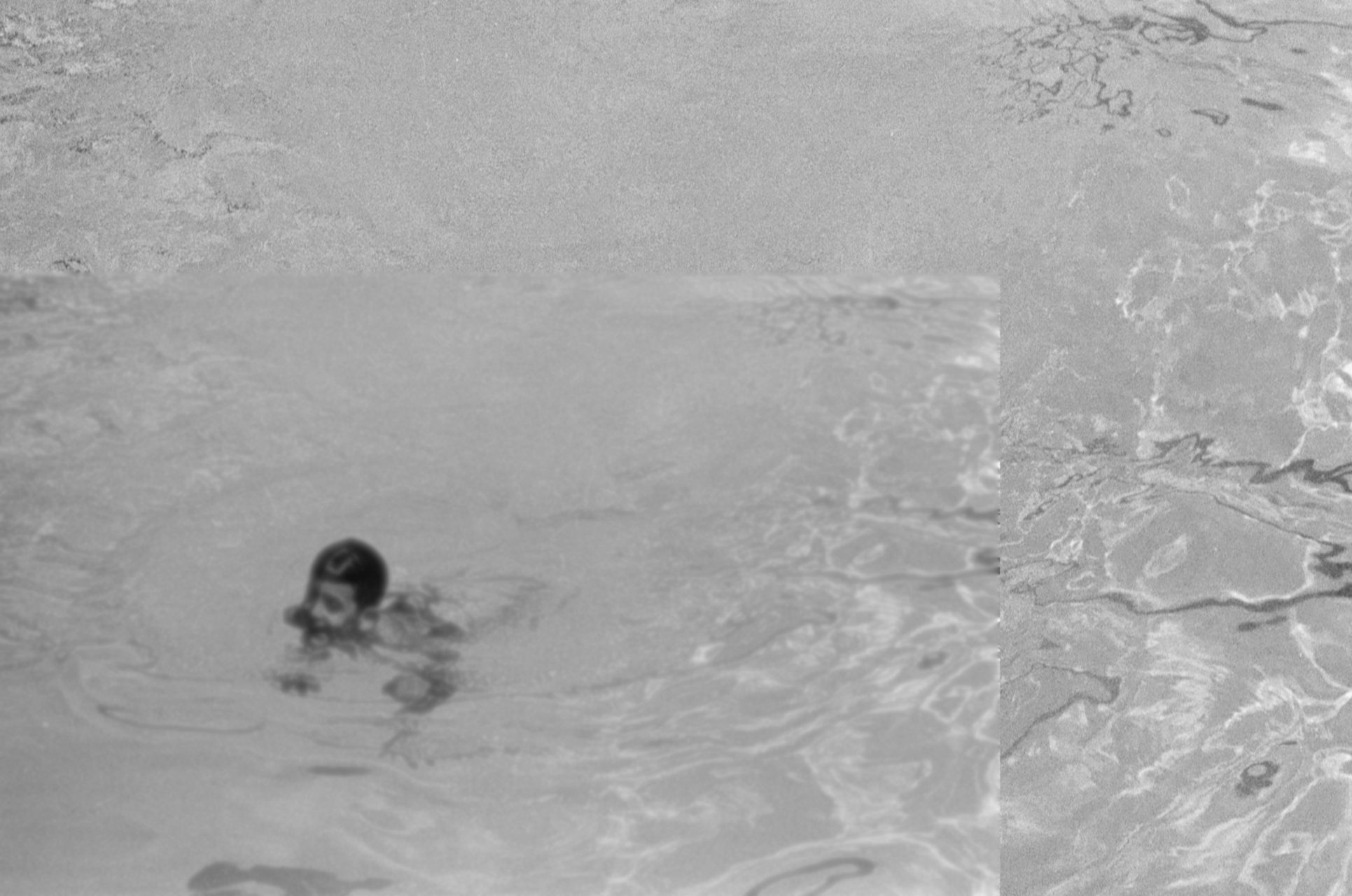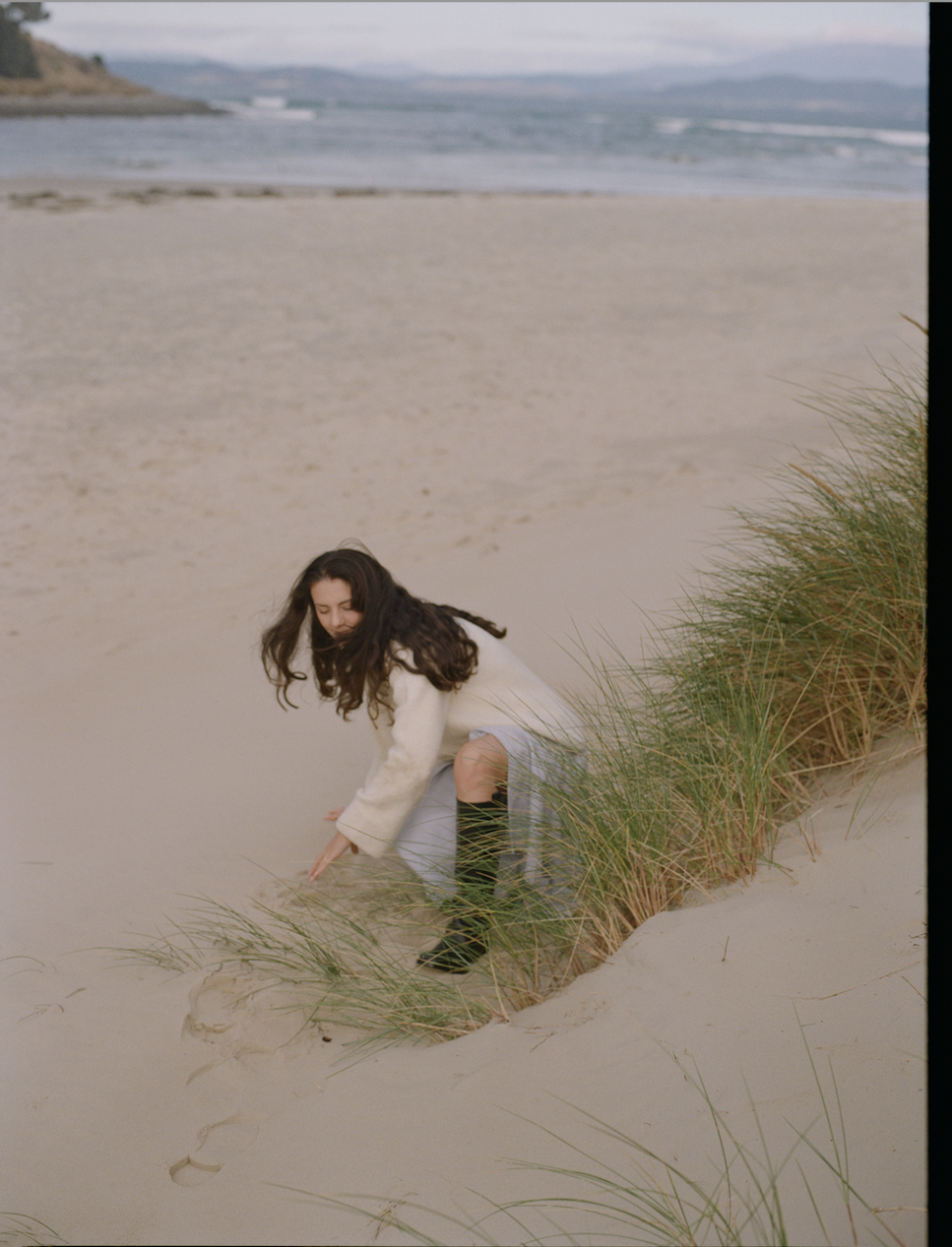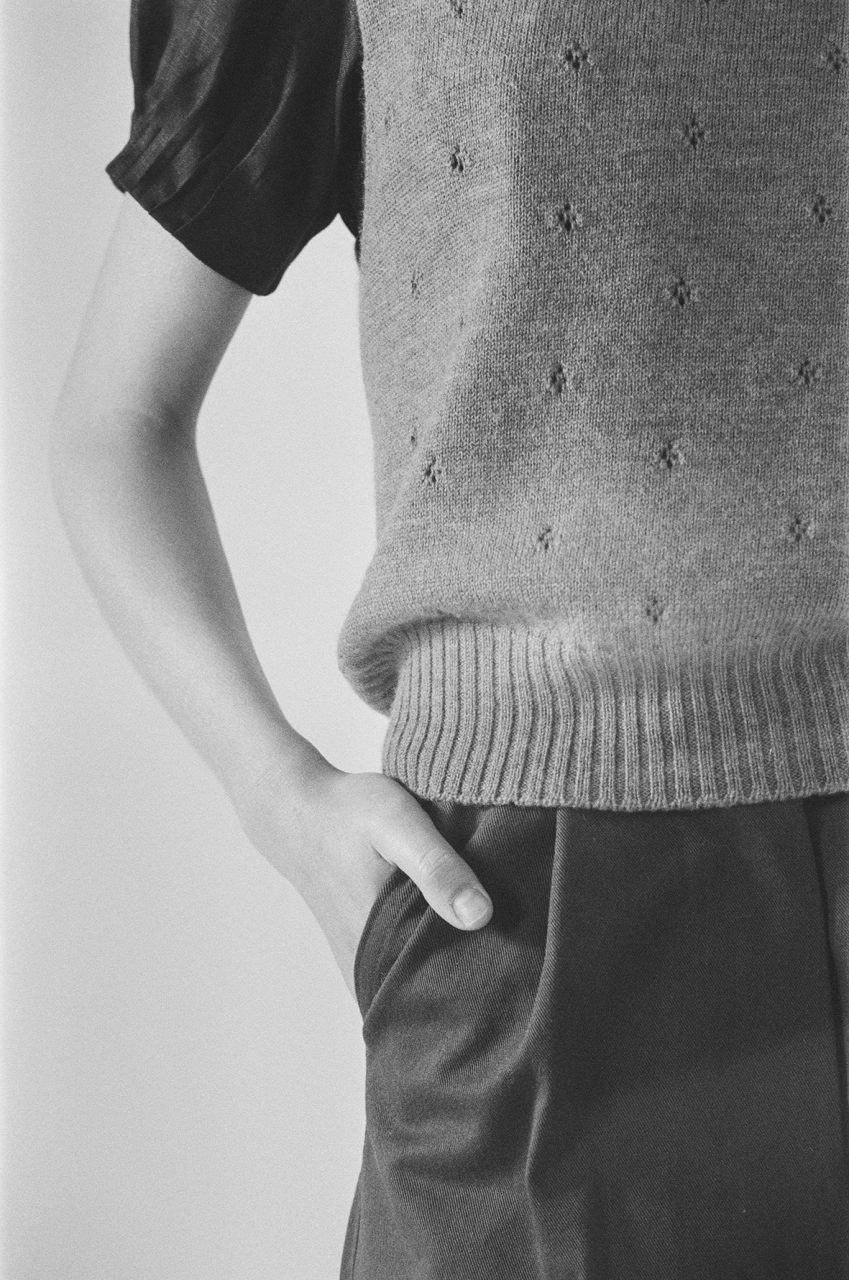An exploration of all the people I hope to be some day
— by Annika Hein
Motherhood as a Metaphor
The ground is soft, damp from the rain, and mist is still lingering in the air. Fragrant bursts of pine and rose and moss compete for attention as oxygen floods my lungs and the rhythmic thud of my footsteps guides me into a meditative state. In, two, three, four. Out, two, three, four.
It’s quiet and calm as the day takes its morning stretches, but it’s late enough to ensure I’m not alone, to guarantee that solitude not be an option. That’s the thing about working to your own schedule, working to your own hours: your version of a 9 to 5 gets confused, gets mixed up. Your version is involuntarily expected to coexist with other people, other versions. People who are looking at the world differently, existing differently, working to different timelines.
I’ve passed her twice before, slowing down to circle around her space, the space she’s taking up both physically and energetically. The space that can be seen and felt. As an observation, to associate and relate, I compare the two of us. My breaths are attempting to be long and deep. I am not a natural runner, so there’s no sense of ease, but I am confident that others would easily understand my commitment to the practice. I’m puffed and my cheeks are reddened; I’m giddy on fresh air, tasting the smells, falling into a pattern. I am running alone, a fact that is obvious to any passer-by. I am running alone, and I am not a mother—a fact that is only obvious to me, painfully, or not. In comparison, she looks as though awareness of her breath is not something she has considered for some time. We have a similar sense of general unease, yet she is seemingly more distracted. She is also puffed and her cheeks are also reddened, but these visual betrayals of any discomfort she’s attempting to disguise occur without, or in spite of, any sense of personal pattern. She is stopping often to untangle, to rearrange. She is not running alone, and she by all accounts is a mother, more than once over—a fact that is equally as obvious to a stranger as it is to her, as it is to me.
The child on the yellow bike is lagging behind, peddling furiously in an attempt to keep up. She has given up once before, halting the routine, breaking the rhythm, forcing her mother to switch roles, to turn around, to… mother. The second, smaller child, whose mode of transport is also a bike, is now being pushed, drifting alongside taller legs that refuse to stop jogging. His tiny feet flail around the sides of the bicycle, and his arms wrestle to prioritise as the handlebars and a basketball compete for attention. There’s also a dog and a doll and a water bottle. It’s a whole production. Someone begins to cry. The ball falls.
She is not running alone, and she by all accounts is a mother.
Her feet continue to shuffle at jagged pace as she navigates the damage. By the time I reach her, she’s moved skilfully up and down their space on the path. The dog and the ball are secured. Both children are peddling, neither is crying, and they are being given words of encouragement to keep up. She continues her run. Puffed. Reddened. Distracted. But running.
I want to stop. I want to explore the moment, nod kindly in an effort to convey something in the vein of support or comradeship. I meet her eyes with a small smile, but I become aware that I am not a comrade; she and I are not fighting the same fight, having the same experience, working the same 9 to 5. I am an observer.
I am running alone, and I am not a mother.
And suddenly I feel different. Strange. Not in control of what I want. Maybe I don’t feel good enough or that I’m missing something I didn’t even realise I had lost. A misplaced version of a future I’m yet to decide upon. A future where, at the moment, I do not belong. There’s a self-imposed expectation that to compare, or even partake, in this moment I would first have to be a mother. The focus of the comparison has shifted. The comparison is now judgment. The comparison is no longer a humble observation.
I am not a mother.
Biological clocks, without acknowledgement or even a simple introduction, seem to begin their reign with haste. An abrupt panel of loudmouthed judges link age with fertility, scoring accordingly and offering their opinions, wanted or not. Typically marking women on their childbearing activities, these clocks tick similarly to other time-tracking and goal-keeping tools we use to assess our success and happiness. They measure progress and setbacks, course corrections and unwanted path alterations. There are key performance indicators and ideal outcomes to be achieved within a set amount of time, or rather, to be achieved by a set age. Mostly they keep our ambition in check, curating it as effectively as possible in order to build the utopia we seek, assisting us to correctly determine if we’ve procured a life that’s “made it”. But the parameters are personal, specific to the individual. Making it could be as simple as going for a run despite the fact that you have two children under the age of five and a dog that needs walking. It could be professional or emotional growth, artistic praise, a dream wedding, or a happy home life. Our utopias are individual and likely to be ambiguous to an outsider, but they’re also dependent on a wide variety of variables and are often laced with sacrifice. Because most of the time, in contrast to what we’re led to believe, we simply cannot have it all, and often our utopias—those worlds where we’ve made it—are built by way of default on the dreams that fought to sit front and centre.
Want and lust present themselves in different ways, so I suppose the utopia is built upon the items that wished the hardest, forfeited the most. The dreams that take the loss they simultaneously inflict not just into consideration but also willingly into their stride as they continue to forge the path. The dreams that can only be built because of what we forgo. Speaking particularly of utopias of the art world, Patti Smith once commented on the nature and parameters of Frida Kahlo and Diego Rivera’s contributions and sacrifices: ‘I don’t mean to romanticize everything. I don’t look at these two as models of behavior. Now as an adult, I understand both their great strengths and their weaknesses. Frida was never able to have children. When you have a baby you have to relinquish your self-centeredness, but they were able to act like spoiled children with each other their whole lives. Had they had children their course would have altered.’
The utopia continues, regardless of what we think we want and need; it continues because it has to, and it continues in the way it was always supposed to before we got in the way of its original route. Before other people reminded us of what we didn’t yet have, before the plan was confused and the rhythm disrupted. The utopia continues because it has to. The utopia continues the way it was always supposed to.
Exploring this idea of want and need in relation to time, Joan Didion wrote about hope and longing in her essay “On Keeping a Notebook”: ‘I remember wishing that I could afford the house, which cost $1,000 a month. “Someday you will,” she said lazily. “Someday it all comes.” There in the sun on her terrace it seemed easy to believe in someday, but later I had a low-grade afternoon hangover and ran over a black snake on the way to the supermarket and was flooded with inexplicable fear when I heard the checkout clerk explaining to the man ahead of me why she was finally divorcing her husband. “He left me no choice,” she said over and over as she punched the register. “He has a little seven-month-old baby by her, he left me no choice.” I would like to believe that my dread then was for the human condition, but of course it was for me, because I wanted a baby and did not then have one and because I wanted to own the house that cost $1,000 a month to rent and because I had a hangover.’
The unpredictable nature of hopes and dreams makes it difficult to properly understand the nature of our own utopia and the timing that it operates on. Is one’s dream to be an artist measured on the same scale as one’s dream to have a baby or own a lovely home? To achieve these utopias, it would be assumed that we assimilate different roles, but if different roles bring different timelines and their own special circumstances, how can opposing ideals coexist for the same individual?
Beyond today, there is a life where perhaps I am a mother. I’m hopeful. Maybe. It’s a nice thought, and one that I don’t share often—one I don’t want to have to justify, to put a public timeline on. There’s also a life where I spend the morning drinking Earl Grey tea and writing at my desk, surrounded by windows that are filled with shades of green and earth. And then there’s one where I wake to the sounds of the streets of Paris below. These too I don’t share. They’re contradictory, and I find it hard to make them all apply to one morning, to one lifetime. I delicately and privately mind their stories, altering the timeline, experimenting with the plot, to see if they can fit together. To see if their simultaneous and coexisting successes can be met by curating the right list of steps or refining a revised and refocused plan. Are the goals fluid? Which parts are mutable; where can the narrative change? The final thread, an important part of the utopia that I’m building, is the importance of family gatherings, of confirming the kitchen as the heart of the household. The importance of occupying the house with the open door. It may be because my teenage home was mostly separated or that recent years of my adult life have been mostly nomadic, but this simple requirement for a life that’s “made it” is something I tend to intimately and carefully, meticulously pruning the vision and marking the success of the harvest on the door’s foot traffic alone.
Like the mother who runs the same track as me, these versions of my life require commitment, so if we must assimilate different roles to fulfil our utopias, how do we determine or choose the right ones, and is there a timeline to follow? Are these idealistic projections that help us navigate through life, or the limitations that hold us back, forcing us to label and disbelieve in the timing of our own path? If we look at who we are when no one is looking, can we better understand where it is we want to go? American writer Brian Andreas wrote that ‘Time stands still best in moments that look suspiciously like ordinary life.’ So perhaps rather than utopia, what we’re really creating is our own version of an ordinary life, one where time effectively stands still on a regular basis, stops moving just long enough for us to enjoy the moment.
When I was eight years old, my cousin and my sister and I would play dress-ups—not unlike most girls our age. My mum would let us borrow her very special Estée Lauder makeup set. In the dark blue case there were lipsticks in what seemed like hundreds of different shades, and powder palettes that we thought were as great as coloured crayons. We created different fantasy worlds to escape into and lands to live within. Effectively, they were just projections of who we thought we’d like to be that day, or one day. In the height of the fantasy, I would always be Kylie or Madonna. When we were being more realistic, I would be a fashion editor or a writer, and I would be a mother with four daughters. I would have red hair with blonde highlights and would work for a magazine or write poetry that was similar to the works I had already written and saved on a floppy disk marked with my name, a flower, and the copyright symbol.
The bounds of our utopias knew no limits; we would rewrite and reconstruct our futures with graceless candour, paying little attention to the boundaries imposed by the real world. Creating a different ending seemed as simple as adding a hat, and with great delight we could be as many as twenty different people in one day, trying each one on with innocent consideration, studiously noting how it felt, what it looked like. As I grew older, some interests swayed. Kylie and Madonna were demoted to sources of listening pleasure rather than mystic versions of a life I’d like to have. I no longer wanted red hair, but the blonde highlights might be okay, and while I would be happy to have daughters, I understood this was not something one could simply select, and perhaps four was slightly overzealous. Other goals stayed the same, or variations of them remained, and while I was navigating the new terrain of reality, I learnt about hopes and dreams and the hard actuality that they weren’t necessarily a guarantee. But perhaps most importantly, I learnt that life, however well you plan it, doesn’t work on linear time, and for the most part the utopia—like my eight-year-old armour of identity-changing costumes—is based on who and what you feel like being that day.
—
I wake today and feel nothing like I did yesterday. The understanding of this is a process, a wave of mental movements and practices I go through each time the sun rises, each time there is once again light flooding in through my windows. The experience is cathartic. It’s as if by understanding my inability to control the situation I somehow reclaim ownership of it. I have become accustomed to waves of elation crashing over skeletons of sadness and despair. This is not a “Dear Diary”-type practice, but more an acknowledgment of my body, of my mind, and of where and how I woke today. Sometimes—and this is not necessarily pertinent to the morning alone—I feel like I’ve forgotten to breathe. It creeps up on me until I feel as though I need to made up for lost breath, as though the only way to counteract the missed air is to fill my lungs all the way up to my collarbones. Yoga has taught me more about breath, and about mindfulness too. I’ve taken these lessons with me into my running practice. But what it’s also taught me, and what I haven’t yet completely learnt (or maybe accepted), is the idea of time-trusting. What I haven’t learnt or accepted yet is the notion of timelessness. An understanding that dreams, and in fact utopias, however expertly tended to, don’t and won’t work to the logical mind’s undeviating timeline.
‘Allow yourself to transform as many times as you need to be fully happy and free.’ Yung Pueblo said that. He also wrote that “Realizing what your speed is and moving at that rate without regret is one of the best things you can do for your peace and your growth.” The notion of need is what seems particularly important here. There’s a normalisation of the necessity to transform within your own personal timing, sure, but calling attention to this idea of it being a need rather than a want relinquishes guilt and shame and control. What constitutes a dreamland one day is likely to be vastly different the next, and so our utopias and expectations—and indeed our personal outlook and image of ourselves—must adapt accordingly. Although it’s easier said than done, getting out of your own way is usually the most logical step. To dissolve comparison and surrender to the current moment, to the personal timing of your life, to the weather.
Notice the beauty of the rain the moment you decide you longer care about getting wet. The forced moment of contemplation gifted to you as you pause in line and await your turn. The freedom that comes with snoozing the various time-keeping apparatus we consult to monitor the trajectory of our lives and whether or not we have yet made it. Forced optimism, perhaps. Or potentially a simple acceptance of what’s already been decided, of what’s already been delivered. A way to make room for the things we can cultivate and curate. A way to embrace the different roles we can assimilate for the person we need to be today.
A shift in perspective. A giving in. A surrender.
Joan Didion famously wrote, ‘Life changes fast. Life changes in the instant. You sit down to dinner and life as you know it ends.’ So if time continues to operate with or without our participation, perhaps the best thing we can do is let go. Take stock of who we are today and who we think we want to be tomorrow, and navigate the narrative accordingly. Make the comparison once again a humble observation rather than a sharp-edged judgment, and then simply move on.
Today I am running. I am running alone, and I am still not a mother. Perhaps one day I will be, but for now I am a lot of other things. And that’s okay too.
—

